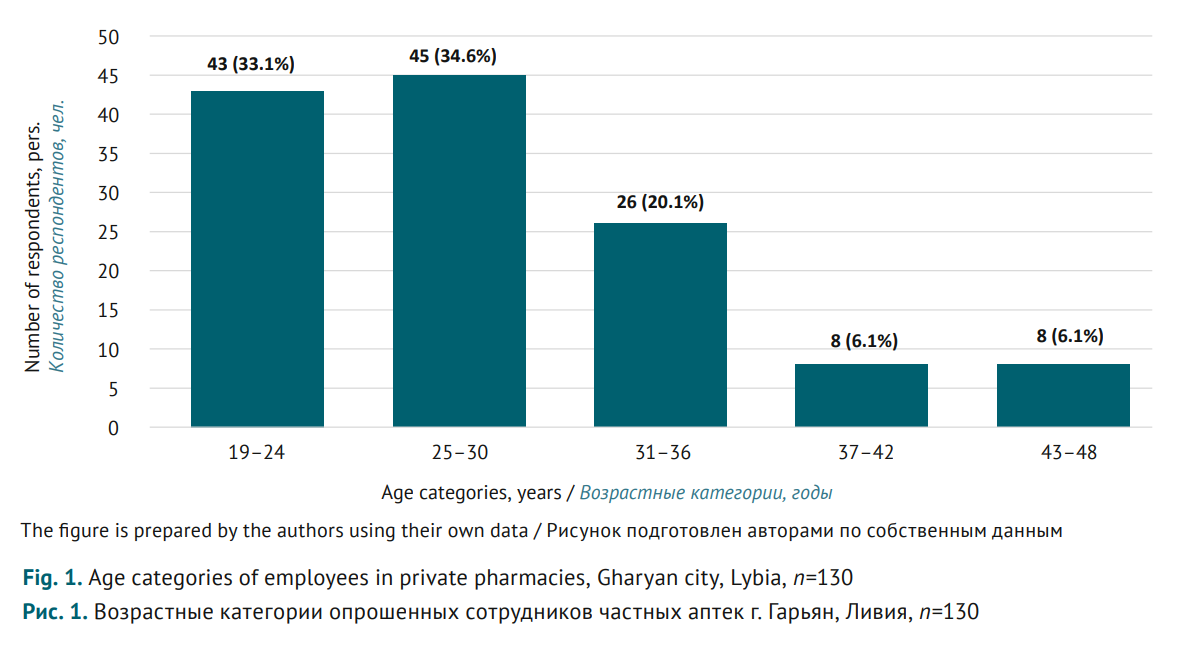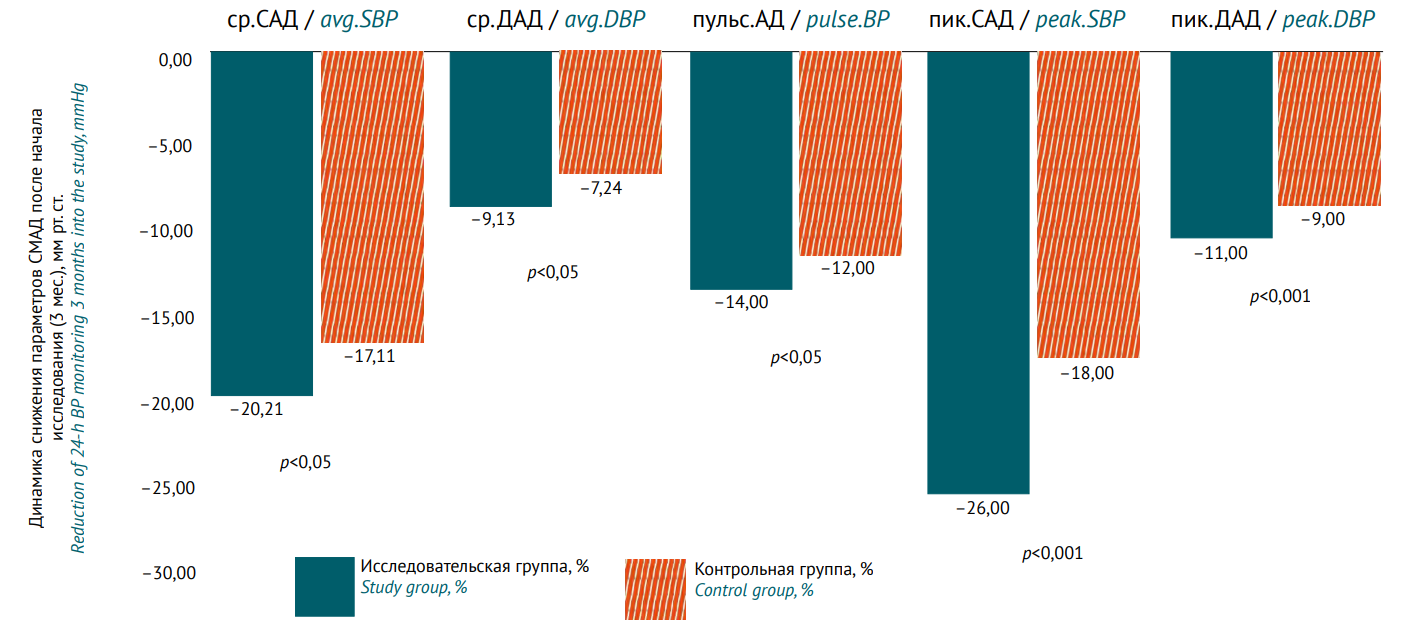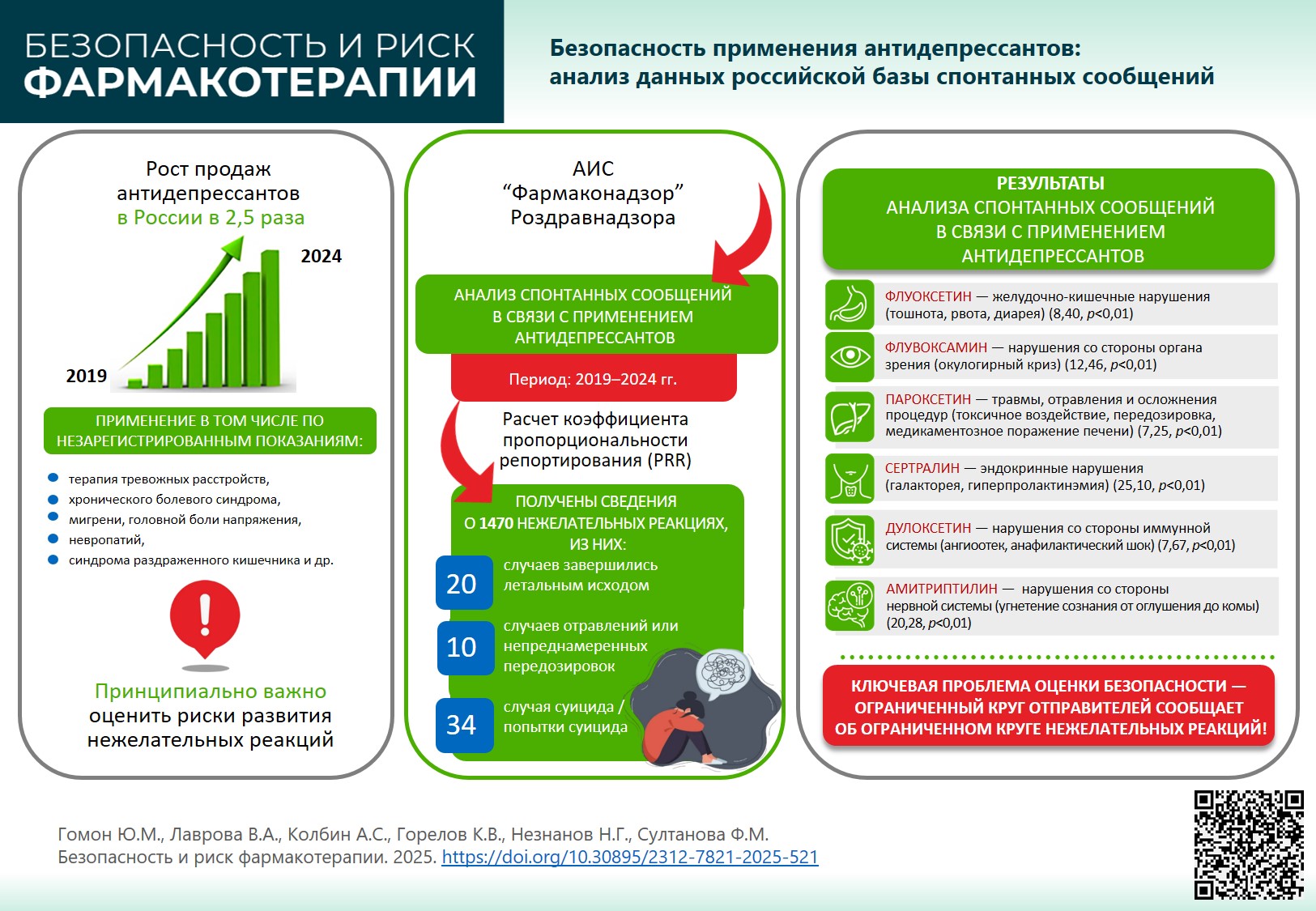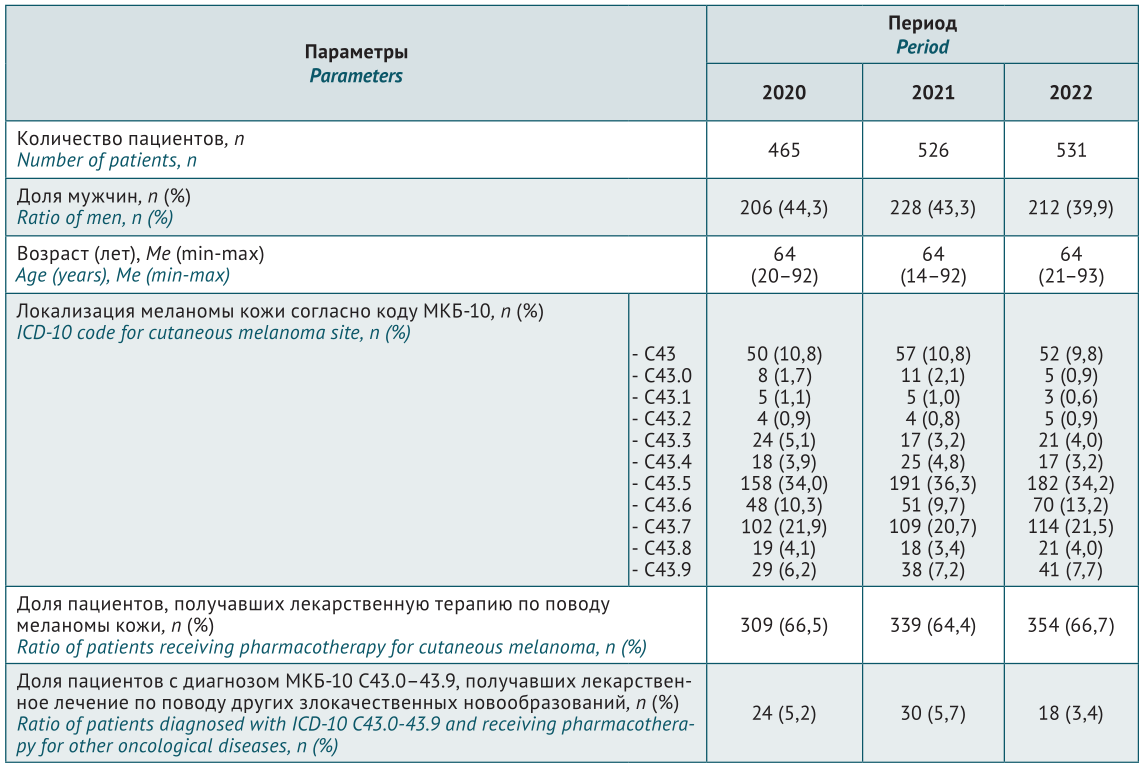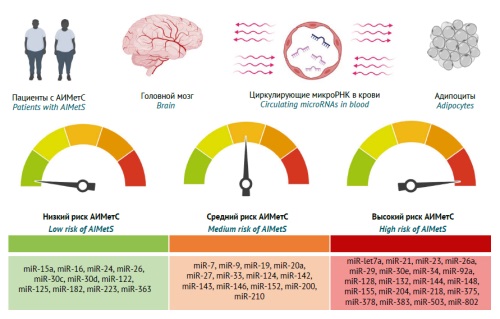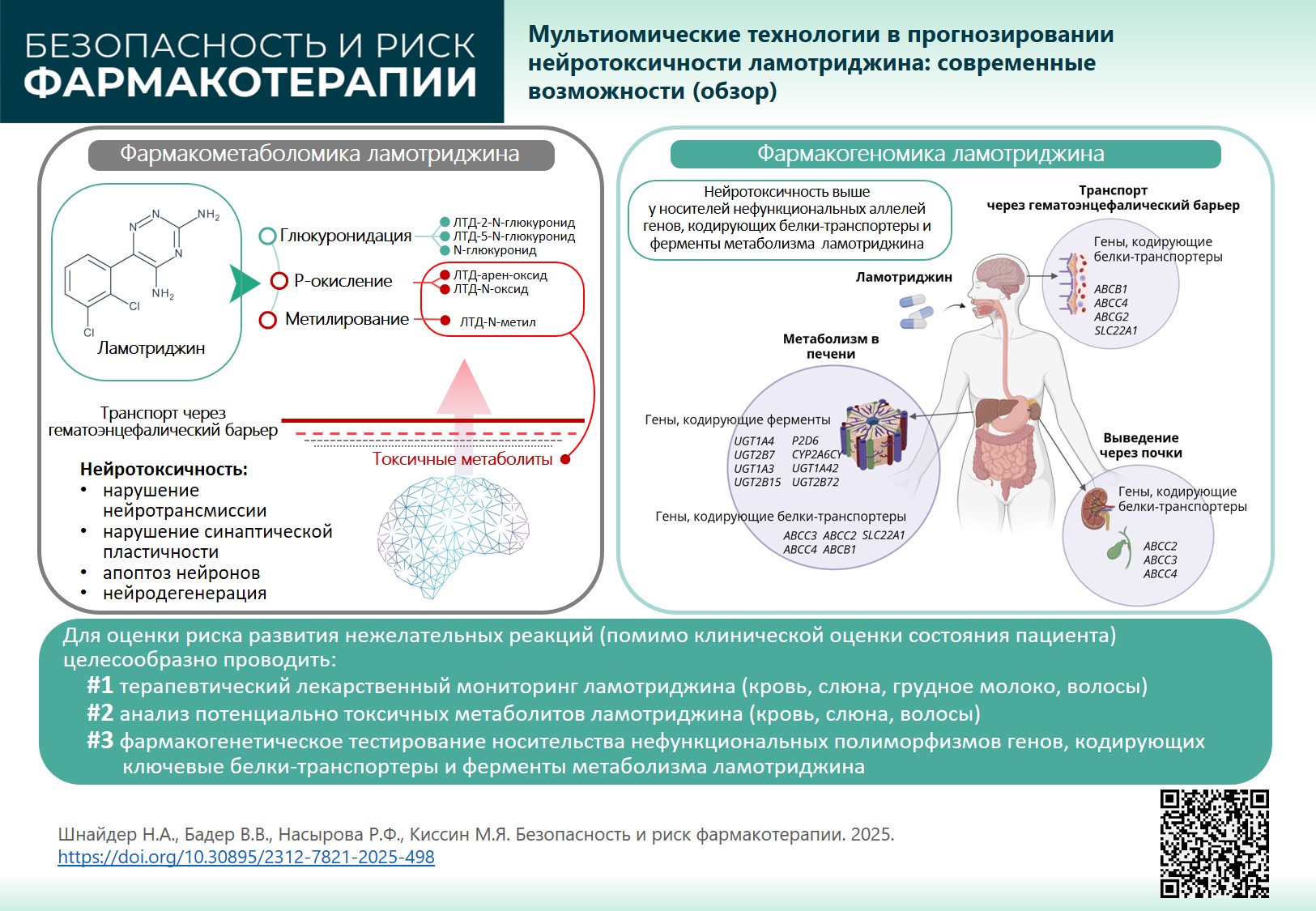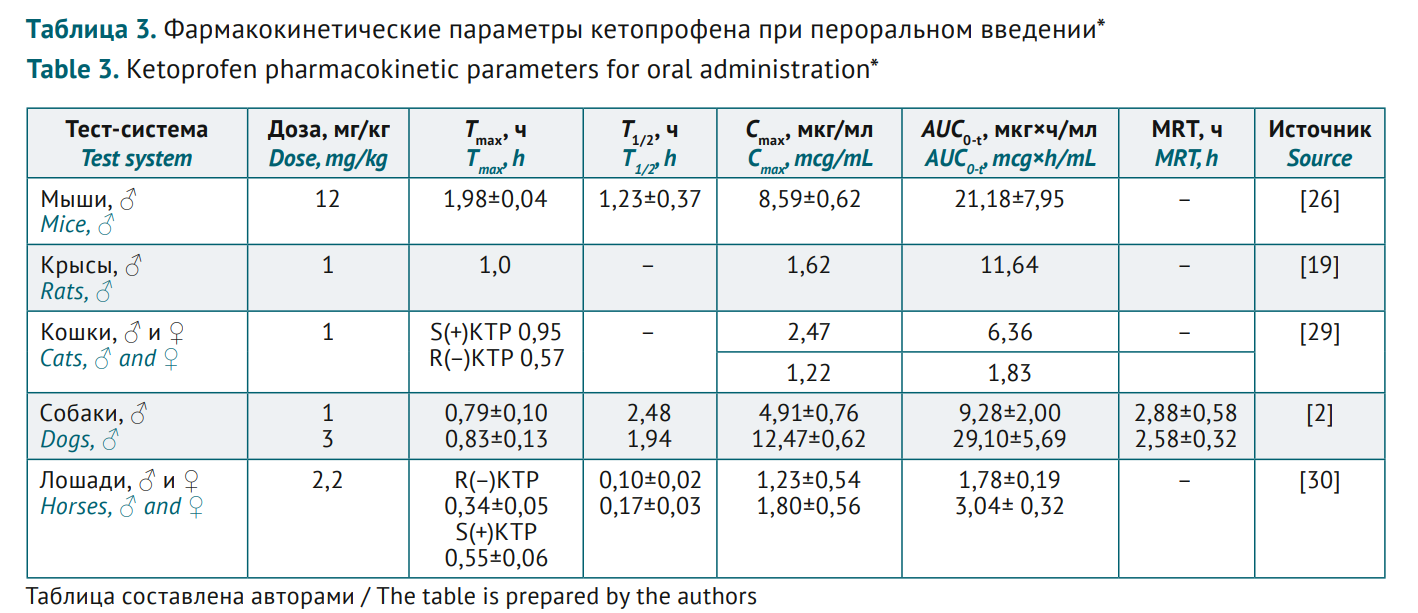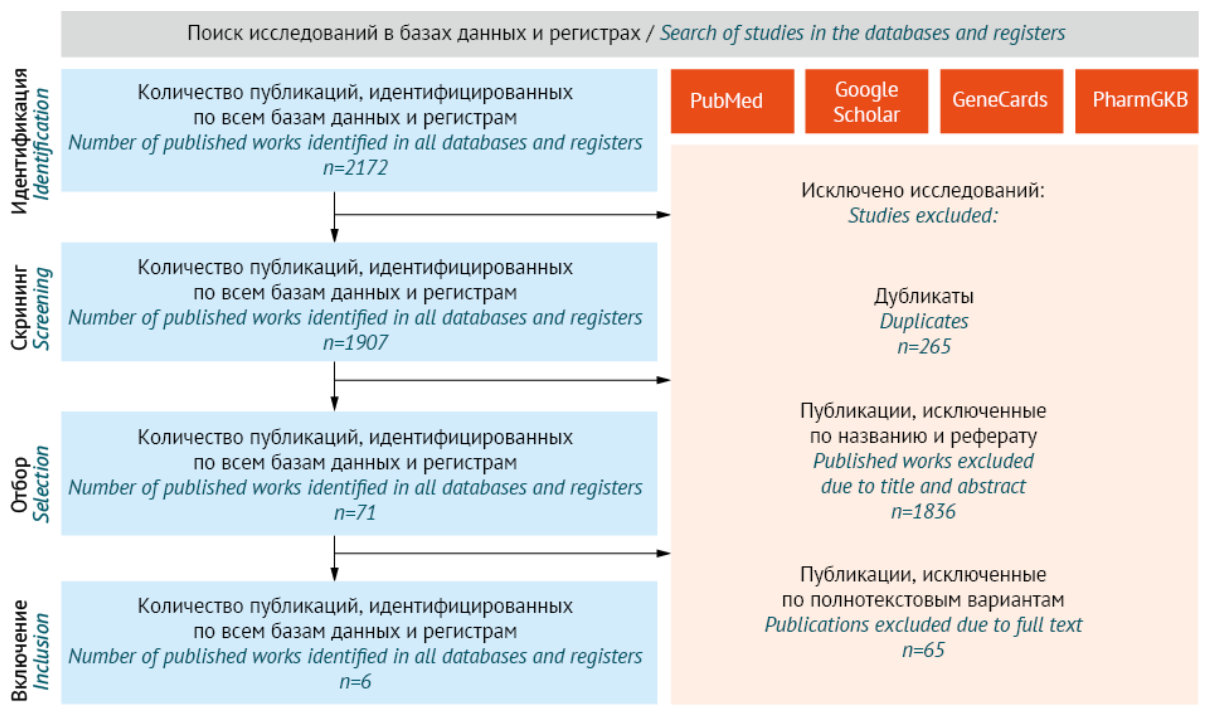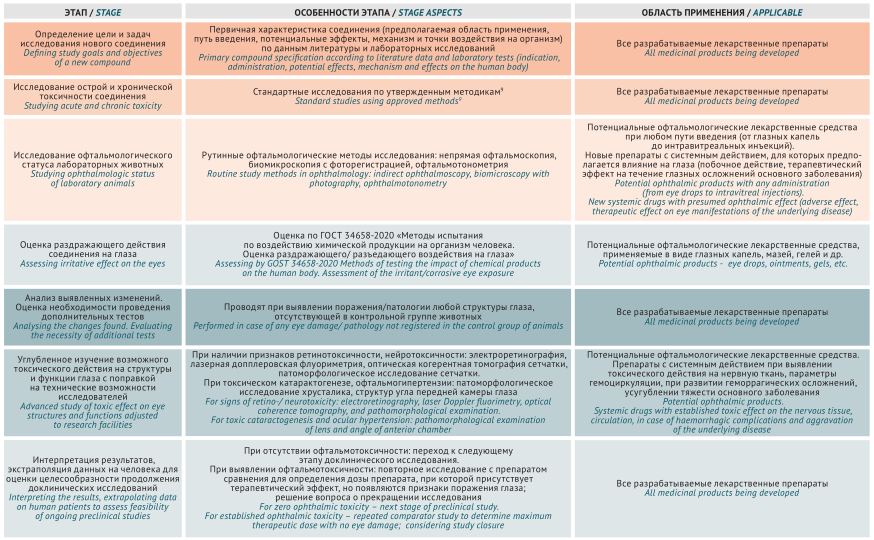ORIGINAL ARTICLES
INTRODUCTION. Pharmacovigilance ensures drug safety through continuous monitoring, yet awareness remains limited in low-resource settings. Ranitidine, a widely used antacid, was withdrawn globally in 2020 due to contamination with N-nitrosodimethylamine (NDMA), a suspected carcinogen. Despite an official withdrawal from drug circulation, ranitidine is still at risk of being used unreasonably; the conditions given make it a relevant goal to assess professional awareness of pharmaceutical employees.
AIM. This study aimed to detect pharmacovigilance challenges among Lybian pharmacies and explore the new growth vectors using awareness of ranitidine withdrawal reasons and safety issues among pharmacy employees as an example.
MATERIALS AND METHODS. A cross-sectional study was conducted engaging 130 pharmacy employees of Gharyan city, Libya, in January-March 2023. A structured questionnaire with three sections was used, including: 1) demo graphics (age, gender, education, and experience); 2) basic pharmacovigilance knowledge of participants (six questions with Yes/No answers); 3) awareness of ranitidine withdrawal (six questions with Yes/No answers). Data were analysed using descriptive statistics.
RESULTS. The survey showed that almost a third of participants (36.2%) were not familiar with the term “pharmacovigilance”; more than two-thirds (63.8%) did not know that Libya’s national pharmacovigilance centre existed. This contradicts the responses regarding pharmacovigilance measures: 78.5% stated they were trained in pharmacovigilance; 81.5% knew about special report forms to be filled out for any adverse drug reactions, while 16.2% previously made reports on adverse reactions. 55.4% of participants were familiar with the cases where drugs were withdrawn due to related risks. At the same time, 79.2% thought that ranitidine was still dispensed from the pharmacies; and 30.8% misclassified ranitidine, a Н2-blocker, as an antihistamine. 61.5% of participants thought carcinogenic impurities were caused by manufacturing contamination; moreover, only another 36.1% associated the impurities also with the improper storage.
CONCLUSIONS. The identified critical gaps in pharmacovigilance knowledge and ranitidine safety highlight the need for targeted educational interventions among Gharyan pharmacy employees and regulatory enforcement of drug withdrawals from the circulation.
INTRODUCTION. Valsartan+sacubitril (a combination of neprilysin inhibitor and angiotensin II receptor blocker) effectively reduces blood pressure (BP) and has the potential to improve metabolic parameters. However, despite this class of drugs being included in clinical guidelines, the specific indications in patients with arterial hypertension are not clearly defined, thus requiring a more detailed study.
AIM. This study aimed to assess valsartan+sacubitril combination used for treatment of arterial hypertension in adults in outpatient settings, specifically regarding its efficacy, safety, and impact on overall clinical outcomes and quality of life.
MATERIALS AND METHODS. The study is an open prospective longitudinal observation with active control. The study was conducted at State Autonomous Healthcare Institution “City Polyclinic No. 12” (city of Tyumen, Tyumen region). Patients were recruited from 01.10.2022 till 31.03.2025. For each patient, the observation period was 3 months for stage 1 (n=550) and 1 year for stage 2 (n=160). BP was controlled at the inclusion, at the end of stage 1, and after 3, 6, and 12 months of treatment. At stage 1, patients were divided into 4 groups: angiotensin-converting-enzyme inhibitor (ACE) + diuretic (n=189), ACE inhibitor + calcium channel blocker (CCB) (n=121), angiotensin II receptor blocker (ARB) + diuretic (n=119), ARB + CCB (n=121). At stage 2, patients not achieving target BP ≤140/90 mmHg (n=160) were randomised into 2 groups: study group (n=80), patients receiving valsartan+sacubitril + diuretic/CCB; and control group (n=80), receiving a triple combination of ARB + diuretic + CCB or ACE inhibitor + diuretic + CCB.
RESULTS. At stage 2, the rate of patients achieving target BP was 93% in the study group vs. 83% in the control group after 3 months; 94% vs. 88% after 6 months; and 99% vs. 98% after 12 months, respectively. Average daily systolic blood pressure and diastolic blood pressure after 3 months of treatment had a statistically significant difference in favour of the study group (p<0.05). Noteworthy is the positive effect on the reduction of peak average daily systolic, diastolic, as well as pulse BP, and blood pressure load (p<0.001). After 6 months, the difference between the groups remained the same for all the decreasing parameters (according to 24-h blood pressure monitoring). Only after 12 months did patients in the control group receive a comparable reduction in the parameters; no statistically significant differences were revealed (p>0.05). EQ-5D showed higher quality of life in the study group after 12 months, the average score being 0.82±0.08 vs. 0.69±0.10 in the control group (change +0.17 vs. +0.05; p<0.05). All adverse reactions for valsartan+sacubitril were predictable; the differences in the frequency of treatment discontinuation between the groups were not statistically significant.
CONCLUSIONS. Valsartan+sacubitril has demonstrated efficacy and safety in hypertension in adults. This combination can be recommended as a second-line treatment in case of ineffective two-component regimens of the first-line antihypertensive therapy.
INTRODUCTION. Extensive use of antidepressants in a wide range of indications, including off-label use, as well as application in vulnerable groups of patients, shows the need to summarise the available safety data of these medicinal products.
AIM. This study aimed to evaluate safety profile of antidepressants prescribed for neurotic disorders in the Russian Federation.
MATERIALS AND METHODS. The study analysed spontaneous reports registered by Pharmacovigilance database of Roszdravnadzor Automated Information System in 2019–2024 for medicines with international nonproprietary names: fluvoxamine, citalopram/escitalopram, paroxetine, fluoxetine, sertraline, venlafaxine, duloxetine, vortioxetine, amitriptyline, clomipramine, mirtazapine, and imipramine. Reporting odds ratio and proportional reporting ratio was calculated for each international non-proprietary name with respect to statistically significant disproportionality.
RESULTS. Amitriptyline resulted in the maximum number of reports (n=470), the minimum registered for imipramine (n=2). For most of the medicines, the total spontaneous reports over the five years of follow-up did not exceed 100. Statistically significant associations between the treatment and adverse drug reactions (ADRs) were demonstrated for the atypical antidepressant vortioxetine, for example, mental, endocrine, cardiac, and reproductive system disorders. Association with laboratory and instrumental disorders was confirmed for agomelatine. Among selective serotonin reuptake inhibitors, the following ADR relationships were statistically significant: fluoxetine — gastrointestinal disorders; fluvoxamine — eye disorders; paroxetine — ADRs in the systemic organ class Injuries, Poisoning, and Procedural Complications; sertraline — endocrine disorders. Use of selective serotonin reuptake inhibitors venlafaxine and duloxetine was significantly associated with immune system disorders. Treatment with tricyclic antidepressant amitriptyline is associated with nervous system disorders. Moreover, there was a high reporting rate from singular health facilities and pharmaceutical companies regarding certain products (atypical antidepressants, selective serotonin reuptake inhibitors, and norepinephrine reuptake inhibitors) and ADRs (such as oculogyric spasm for selective serotonin reuptake inhibitors).
CONCLUSIONS. In 2019–2024, the number of spontaneous reports on ADRs caused by antidepressants increased every year; however, overall reporting remained low. Low number of spontaneous reports that do not align with actual consumption data, as well as discrepancy defined between incoming spontaneous reports on certain medicinal products and ADRs make it impossible to assess safety profile of the products considered. To determine safety profile of the medicinal products, further studies based on real clinical practice are recommended.
INTRODUCTION. Despite its relatively low share in the structure of oncological incidence, cutaneous melanoma (CM) is one of the most cost-intensive nosologies. The emerging new combination treatment regimens require regular pharmacoeconomic monitoring.
AIM. This study aimed to evaluate the current structure, dynamics, and costs of drug therapy in Moscow region over 2020–2022 based on pharmacoepidemiological and pharmacoeconomic analysis of subsidised drug provision in order to identify key regional trends.
MATERIALS AND METHODS. Primary depersonalised data were obtained from patient medical records in the Unified Medical Information and Analytical System (EMIAS). The analysis included total number of patients and their clinical profile (gender, age, diagnosis code); for the drugs, international non-proprietary name, dosage form, dosage, number of packages sold, and total cost was analysed. Cost analysis considered both total cost and structure in terms of selected international non-proprietary names. An additional analysis was conducted for a three-year period.
RESULTS. Data from 1,522 patients diagnosed with ICD-10 C43.0–43.9 were examined (465 patients in 2020, 526 patients in 2021, and 531 patients in 2022). Over the study period, the number of patients increased by 14%, with gender structure gradually changing and the ratio of men decreasing from 44.3% to 39.9%. Two-thirds of the patients received drug therapy for the primary disease. Total outpatient costs ranged from 407.6 million rubles in 2020 to 615.3 million rubles in 2022. CM share of drug therapy averaged 98% of the total cost. Over 2020–2022, the highest patient coverage, number of packages, and cost level was attributed to dabrafenib+trametinib and vemurafenib+cobimetinib combinations. They accounted for an average of 85% of all patients and almost 99% of all costs. Over the 3-year period, there was a twofold cost increase for dabrafenib and trametinib, with a comparable twofold cost decrease for vemurafenib and cobimetinib.
CONCLUSIONS. Pharmacotherapy structure, dynamics, and cost has been evaluated in CM patients of Moscow region over 2020–2022. The obtained data can be used to optimise pharmacotherapy of CM patients at the regional level by widely introducing both clinical and pharmacoeconomic evaluation principles of treatment approaches.
REVIEWS
INTRODUCTION. The first part of this article discussed antipsychotic-induced metabolic syndrome (AIMetS) as a common adverse reaction to the pharmacotherapy of psychiatric and addiction disorders. The authors presented a review of basic and additional clinical and biochemical biomarkers of metabolic syndrome (MetS) in general and AIMetS in particular in patients with schizophrenia spectrum disorders and outlined approaches to measuring these biomarkers. Detecting changes in the expression of circulating microRNAs in the blood can be considered a promising method for predicting and diagnosing AIMetS.
AIM. This study aimed to evaluate the role of circulating microRNAs as epigenetic biomarkers of the key components of AIMetS pathogenesis.
DISCUSSION. The authors reviewed and collated the results of academic and clinical research (2012–2024) with a focus on the role of circulating microRNAs involved in the key AIMetS pathogenesis and progression pathways. The authors analysed the results of studies on the role of circulating microRNAs in the blood as regulators of the key components of MetS and AIMetS pathogenesis. The studied components of pathogenesis included oxidative stress, systemic inflammation, adipogenesis regulation (and abdominal adiposity development), lipid metabolism, high- and low-density lipoprotein cholesterol homeostasis, atherogenesis, and hepatic steatosis, as well as the regulation of insulin and leptin sensitivity, glucose metabolism and appetite, and insulin, neuropeptide Y, orexin, thyroid and parathyroid hormone expression. A personalised assessment of the safety of pharmacotherapy may depend on the pattern of circulating microRNAs that induce or inhibit the main components of AIMetS pathogenesis. The differences in the results of the reviewed microRNA studies may be due to the differences in the design of these academic (mainly) and clinical studies and their lack of consideration for modifiable and unmodifiable risk factors for developing AIMetS. The authors proposed a microRNA classification according to the level of risk of developing AIMetS.
CONCLUSIONS. The findings demonstrate that the sensitivity and specificity of epigenetic biomarkers of AIMetS can vary widely, depending on the nature of their influence (predictive or protective) on one or several pathogenetic components of this widespread adverse reaction to psychopharmacotherapy. The most studied microRNAs are predictive biomarkers of oxidative stress (miR-1, miR-21, miR-23b, miR-27a, etc.) and systemic inflammation (miR-21, miR-23a, miR-27a, etc.) in patients at high risk of developing MetS and AIMetS. Promising epigenetic biomarkers of AIMetS include microRNAs that affect the expression of and sensitivity to neuropeptides, including neuropeptide Y (miR-let7b, miR-29b, miR-33, etc.), leptin (miR-let7a, miR-9, miR-30e, etc.), and orexin (miR-137, miR-637, miR-654, etc.).
INTRODUCTION. Lamotrigine (LTG) is among the most commonly prescribed second-generation antiepileptic drugs due to its low teratogenic risk. However, lamotrigine has pronounced neurotoxic, hepatotoxic, dermatotoxic potential (for genetic and metabolic causes) and in some cases can even cause multi-organ failure. Understanding lamotrigine mechanism can help individualise therapy and increase its safety, considering pharmacodynamics and pharmacometabolomics that determine its metabolism, transport, and elimination in a particular patient.
AIM. This study aimed to develop an approach to lamotrigine therapy of epilepsy and other neurological and psychiatric diseases reducing neurotoxicity, with due regard to pharmacogenomics and pharmacometabolomics.
RESULTS. LTG is metabolised in the liver in two pathways: glucuronidation (major pathway) and P-oxidation (minor pathway). As a result, neutral and toxic (reactive) lamotrigine metabolites are produced that can circulate in blood serum for a long time, penetrate the damaged blood-brain barrier in patients with therapy-resistant seizures and have a neurotoxic effect, triggering or maintaining neurotransmission disorders, impaired synaptic plasticity, neuronal apoptosis and other neurodegeneration mechanisms. An important role in lamotrigine neurotoxicity belongs to transport proteins involved in the efflux (excretion) of reactive (toxic) metabolites from the brain into the systemic circulation, as well as from hepatocytes into the gastrointestinal tract by bile and through the kidneys with urine. Genetically determined delayed efflux through the blood-brain barrier (pharmacogenomics) increases lamotrigine neurotoxic potential.
CONCLUSION. To assess the risk of lamotrigine-induced adverse reactions, together with clinically assessing patient’s condition, it is recommended to: 1) monitor drug distribution (blood, hair, saliva, breast milk); 2) analyse potentially toxic metabolites (blood, saliva, hair); 3) perform pharmacogenetic tests for non-functional polymorphisms of genes encoding key transport proteins and enzymes involved in drug metabolism. Results of pharmacogenetic and pharmacometabolic tests applied in the clinical practice of an epileptologist will allow to manage lamotrigine neurotoxiсity.
INTRODUCTION. Ketoprofen is a non-steroidal anti-inflammatory drug (NSAID) with pronounced analgesic, anti-inflammatory and antipyretic effect. Ketoprofen pharmacokinetics is comparatively well described in various in vivo models. Since it is potentially possible to create new dosage forms of ketoprofen, with pharmacokinetics studies contributing to high-quality pharmaceutical development, a comparative assessment is relevant for the data on animals and humans.
AIM. This study aimed to identify animal species relevant for preclinical studies of different ketoprofen dosage forms by summarising bioanalytical methods used to assess pharmacokinetics and by comparing different test systems.
DISCUSSION. Reversed-phase high-performance liquid chromatography with ultraviolet/mass spectrometric detection and acetonitrile or methanol-based eluents in various buffer solutions is the most ubiquitous method for ketoprofen analysis in biomaterials. Ketoprofen pharmacokinetics was studied in humans and animals of several phylogenetic species using various dosage forms (injectable solutions, tablets, paste forms, etc.) and the relevant administration (intravenous, intramuscular, oral, transdermal). High drug bioavailability was noted for different routes. Maximum concentration (Cmax) range at similar doses and similar time parameters (time to maximum concentration, Tmax, half-life, T1/2 and mean residence time, MRT) for the three main administration routes (oral, intravenous and intramuscular) was comparable in humans and rats, cats, and dogs; thus these test systems were suggested for pharmacokinetics studies of ketoprofen preparations.
CONCLUSIONS. The analysis suggested that rats and larger animals (cats, dogs) can serve as test systems in ketoprofen pharmacokinetics studies, at least for oral, intravenous, and intramuscular administration. Using ketoprofen as an example, the study showed feasibility of integrating heterogeneous pharmacokinetic data, as well as comparison challenges due to variable test systems, study objects, dosages, and administration routes.
INTRODUCTION. Despite the proven clozapine effectiveness in patients with treatment resistant schizophrenia, its use can cause adverse drug reactions, including clozapine-induced sialorrhea (CIS). Data on CIS pathogenesis are limited. Identifying CIS pharmacogenetic predictors will make it possible to both predict adverse drug reactions prior to therapy and specify individual pathogenetic elements.
AIM. This review aimed to identify CIS predictors using systematic analysis of literature data.
DISCUSSION. Research was conducted independently by two co-authors using PubMed, Google Scholar, GeneCads, and PharmGKB databases. A total of six (6) studies were selected that examined 17 candidate genes. The ADRA2A and DRD4 genes were associated with CIS. Polymorphism rs1800544 of ADRA2A gene regulates the expression of alpha-2A adrenoreceptor (ADRA2A). Alpha-2-adrenoreceptors regulate salivation, thus clozapine antagonistic effect causes CIS. Polymorphism of 120-bp DRD4 will reduce expression of type 4 dopamine receptor (DRD4). In turn, this may result in CIS as clozapine increases the receptor blockade. However, the results contradicted other studies, presumably due to assessment of different polymorphisms in the above studies. Moreover, the analysed studies had a number of methodological limitations.
CONCLUSIONS. The performed systematic review made it possible to identify CIS pharmacogenetic predictors. However, large multicenter studies using a strong prospective design and considering these limitations are required in order to develop a pharmacogenetic panel with high predictive accuracy for CIS.
REGISTRATION. Systematic review protocol is included in the national systematic review register (PROSPERO), Registry No. CRD420251089235.
INTRODUCTION. Ophthalmotoxicity assessment of potential drugs is a highly meaningful element of preclinical trials that reflects modes of action and pharmacological effects of a chemical compound on the eyes in topical and systemic use. However, there is no relevant common algorithm for ophthalmotoxicity assessment, suggesting expediency of summarising Russian and foreign experience.
AIM. This study aimed to develop an algorithm assessing ophthalmotoxicity of medicinal products in preclinical in vivo studies based on Russian and international guidelines.
DISCUSSION. Study approaches of chemical compound ophthalmotoxicity were analysed in Russian and international regulatory documents (Guidelines for conducting preclinical studies of medicines, GOST 34658-2020, Guidelines of Organisation for Economic Co-operation and Development (OECD) No. 450 and No. 263). The recommended methods prove to be applicable in preclinical studies and make it possible to study the effect of chemical compounds on the structure (ophthalmoscopy, biomicroscopy, optical coherence tomography) and functions (electroretinography) of the eyes. The study included basic information on the comparative eye anatomy and physiology in mice, rats, and rabbits, crucial for studying irritant and retinotoxic effects and translating the results into clinical trials. Ophthalmotoxicity research methods and their practical application in typical laboratory animals were described in detail considering their anatomy and physiology. Based on generalised study data, a comprehensive differential approach is proposed for ophthalmotoxicity study of the developed medicinal products.
CONCLUSIONS. The proposed algorithm assessing ocular toxicity of ophthalmic and systemic drugs makes it possible to optimise the design and schedule of preclinical studies in animals and improve the safety of drug use in humans.
ISSN 2619-1164 (Online)



